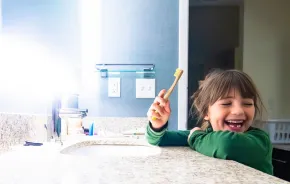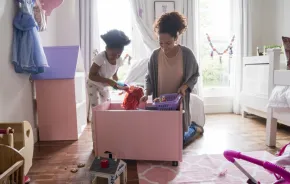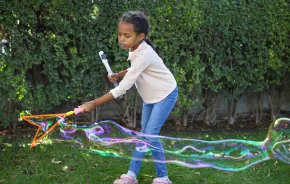
There’s a lot to consider when your child graduates from the nursery to a big boy’s or girl’s room. Done wrong, the room can feel uncomfortable and babyish. Done right, it can positively reflect your child’s personality and interests and create a memorable childhood. Here, design pros weigh in on nine practical design trends that will help you make the right choices.
1. Ditch the intense theme
Designer Joanna Gick of J & J Design Group thinks overamped themed bedrooms — think pirate ship or race car beds, or fantastical fairy-tale motifs — are a thing of the past. While she likes to include kids’ interests in room designs, she tries not to overdo it, because kids’ interests tend to change so frequently. (The last thing you want is to spend backbreaking hours painting a train mural when your kid will move on to superheroes before the paint dries.)
Interior designer Lieve Saether of Turnstyle says one of the changes she’s noticed is that more of her clients are making more mature choices for their children’s rooms. Not mature in the sense that the designs are more sober or grown-up, but in terms of endurance and practicality.
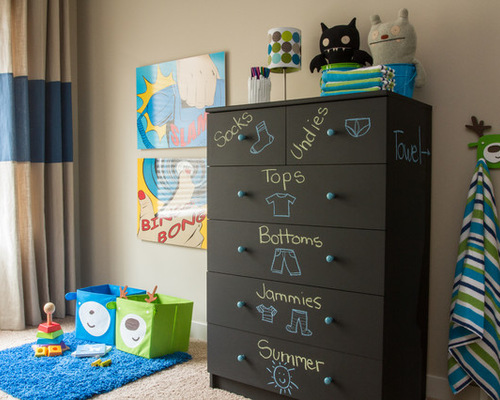
2. Make it interactive
When possible, try to include bedroom furniture and accessories that involve kids in an activity. Designer LeAnne Bunnell made this chalk-paint-covered dresser as an interactive learning piece. It is helping the child transition from images to letters and fostering independence in getting dressed. When the child grows older, the family can simply repaint the piece.
Gick used decals here to create a time-saver for dressing twin girls. Laundry done on the weekends is separated into outfits and put in the appropriate drawers, along with other required clothing items, such as gym uniforms or dance outfits.
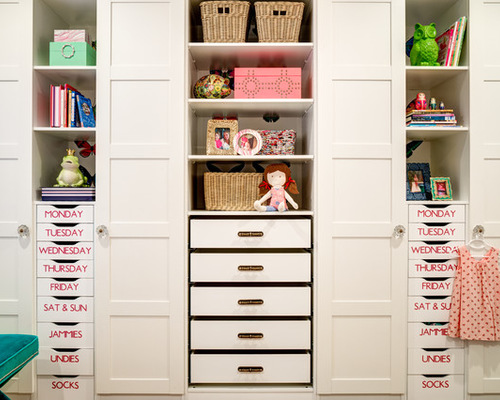
3. Move the study area elsewhere
Bunnell says she’s seen a trend toward clients wanting to pool resources by creating a shared study area close to the kids’ rooms instead of individual desks inside each bedroom. “We’ve made lofts, hallway niches and corners of family rooms into dedicated homework stations for laptops, printers and school projects,” she says.
Moving the desk out of the bedroom makes sense for bedrooms with space constraints as well as for siblings of different ages who share a room. An older child who needs to stay up later to finish homework won’t disturb his or her younger sibling.
4. Control color while still offering choices
How many times have you seen a paint color so brazen in a little one’s room that it made your teeth hurt? The ideal strategy is to let your child pick the room color but with some safety filters. Neon purple might be too much of a departure from your earthy Craftsman home, for example.
Saether approaches kids’ room color palettes by first asking, “What am I trying to accomplish with this space and with the rest of the house?” She says that children should participate in the process of color selection for their room, or at least have the perception they are involved, to encourage immediate buy-in to their room.
While kids have favorite colors, Saether says they don’t yet have the nuance to choose something that makes sense or folds in well with the rest of the house. “That is why I mention a perceived involvement — even if a child has a favorite color, you as the parent or designer and guide have the option of toning it appropriately to what makes sense to the home overall, well within the bounds of a child’s original wish,” she says.
Parents usually know what colors their children will respond to, and if a favorite color is red, for example, then you can provide a narrow, better-suited set of reds from which your child will certainly pick a favorite.
Conventional gender-defining pinks and blues have thankfully given way to brighter, more universal palettes. Gick says she likes brighter hues, because the child will be able to grow with the space more easily. Pastels can sometimes ring too babyish.
She approaches a kids’ room palette by finding a lead item in the room that has several colors to pull from — typically rugs, fabric, artwork or an eye-popping wallpaper.
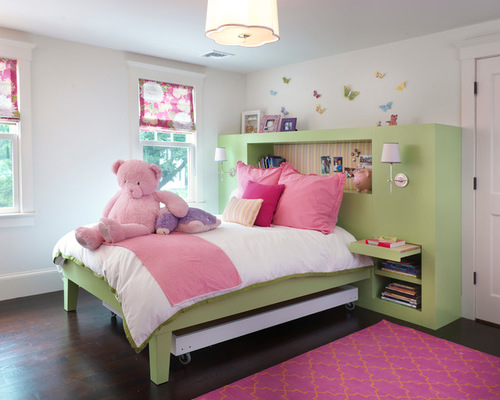
5. Embrace multiuse furniture
Bunnell says multiuse furniture is on trend with her clients and likely here to stay. Multiuse furniture is typically built in and has sliding components like storage drawers or desk or table surfaces.
Because it focuses on space efficiency, this type of furniture aligns best with contemporary homes and urban homes that typically have limited space. The multiuse piece seen here was built in to serve as a headboard, a nightstand, lighting, shelving and a bed in a little girl’s room. There’s also room for a trundle bed below.
Trundle beds save space and make having a friend spend the night effortless. Because trundle beds take up all the space beneath the regular bed, you’ll need to make sure you accommodate storage elsewhere.
6. Go for carpet tiles
I’m all for hardwood in a living or dining room, but carpet is the ideal flooring for a young child’s room. It’s the most comfortable for little knees, and it’s warmer in the winter than hardwood.
A dense low pile or looped carpeting is best for kids’ rooms, especially for running wheeled toys across. Carpet tiles are a great option over conventional wall-to-wall carpeting. If one or two tiles get damaged, switching out is a breeze and furniture moving is minimal. Plus, they come in a rainbow of colors, so you can pick and choose your palette and create patterns as you wish. If carpet tiles or wall-to-wall carpeting isn’t a possibility, an area rug at a minimum will suffice.

7. Soften storage with canvas bins
Saether says baskets are the most used storage in kids’ rooms. “The size of a child’s toys will change many times as a child gets older,” she says. “Baskets and bins ensure flexibility and don’t break the bank.”
Using sturdy canvas bins to store toys is easier on little fingers than hard and heavy plastic containers. They also add softness to the room and look great, especially when you have different colors to mix and match. Color coding is an easy way for your child to be able to organize toys on his or her own — blue for Barbies, red for balls and so on.
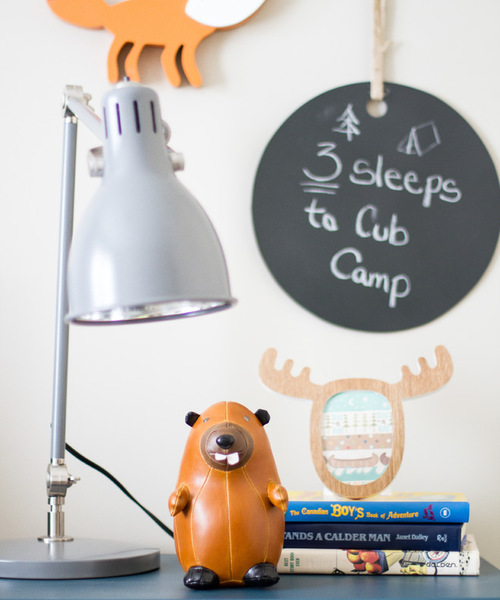
8. Make walls work for you
Similarly to using multifunction furniture, a lot of homeowners and designers are taking advantage of available wall area to bump up storage capacity, sometimes eliminating the need for conventional storage pieces. Using wall space can make organizing and finding books and toys easier for your child.
Consider using wall space for interactive play, too. Here, designer Jennifer Gardner designed removable Lego base-plate boards. “The family was interested in the concept of a Lego wall but wanted to keep the space flexible for the future,” she says. “The boards can be moved to the floor for Lego play and then easily hung back on the wall with a cleat system to display their three-dimensional Lego creations.”
9. Inject some fun
Bunnell designed this bedroom for a small boy, infusing it with a hint of campy humor. “I think we’ve stopped expecting children to be mini adults and requiring them to subscribe to adult design styles,” she says. She likes kids’ spaces that encourage creative, physical and spiritual growth.
Other Houzz reads
- Discuss More Long-Lasting Designs With a Professional
- Incorporate Wall Decals
- 8 Ways to Include the Kids in Your Design
Originally published on Houzz, written by Karen Egly-Thompson









